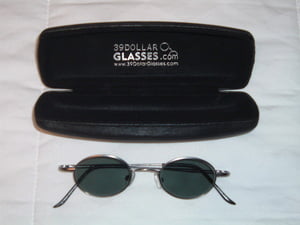While most people who shop for sunglasses or eyeglasses may argue that picking out the frames is the hardest part, knowing which lenses to choose can also be difficult. With eight common options that can be applied to almost any pair of sunglasses or eyeglasses, it’s hard to know which are really beneficial and which options for your lenses are a waste of money. Below are the options currently available for eyeglasses and sunglasses lenses and how they increase the functionality or appearance of your eyewear.
Polycarbonate
Polycarbonate lenses are made from plastic. Because they are so lightweight they are often preferred by those people that wear eyeglasses regularly. People that play sports and wear sunglasses or eyeglasses will also appreciate the fact that polycarbonate lenses are impact resistant.
UV Protection
UV Protection should be added to every pair of sunglasses or eyeglasses you wear. Eyewear with UV protection prevents the eyes from being damaged by UV rays. Sunglasses often come with this protection built in, but you should check the label carefully to insure that your particular pair does. Do not assume that just because the lenses are tinted that you are protected from UV rays.
Scratch resistant coating
Just as the name implies, eyeglasses with this coating should scratch less and therefore last longer. This feature makes it a good option for a favorite pair of eyeglasses or sunglasses that will get lots of use.
Polarized
Polarized lenses reduce glare. Polarized lenses work by reducing reflections from horizontal surfaces, such as pool or a road. This feature makes them a particularly valuable add on if you drive a lot or participate in a sport where glare could create a performance issue.
Photochromic
Although you probably don’t know the term, you’ve probably already seen photochromic lenses. Photochromic lenses adjust their darkness according to the ultraviolet light they are exposed to. This causes them to become clear enough indoors to act as eyeglasses and darken outside enough to be an appropriate sunglasses replacement. Users differ on their appreciation of photochromic lenses, some find them a nuisance that are always too dark or too light, while others appreciate not having to switch between eyewear for indoor and outdoor uses. Talk with your optometrist if you are considering this option.
Anti-Reflective Coating
An anti-reflective coating, sometimes called an AR coating, is normally only applied to a prescription pair of eyeglasses. It is used to prevent light from reflecting off the surface of the eyeglasses. Anti-reflective coating can also increase visibility under certain conditions, such as when you are working under fluorescent lights or at a computer.
Mirror Coated
Once the reserved for the rebel or the police officer, mirror coated lenses have gained popularity in recent years. Only available for sunglasses, mirror coated lenses reflect infrared radiation, protecting the eyes from damage. The reflective qualities of mirror coated lenses also make them the most comfortable sunglasses in bright light or at incredibly high temperatures.
Gradient Tinted
Gradient tinted lenses, another option only available for sunglasses, cuts down on glare that comes from overhead. These sunglasses start dark at the top of the lens and get progressively lighter as the lens reaches the bottom of the eye.
Double Gradient Tinted
Double gradient tinted lenses are dark at both the top and bottom of the lens. This allows them to cut down on more glare than regular gradient tinted lenses. However, the lighter band of tinting in the center of the lens of these sunglasses allow the user to be able to see more easily in lower light situations.




